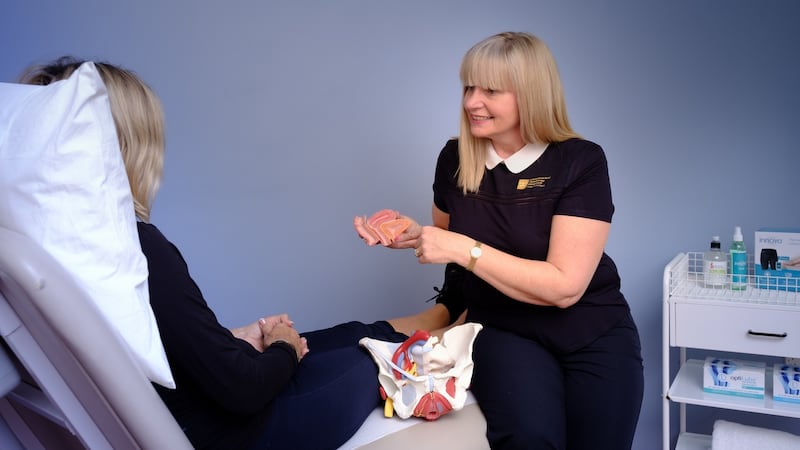Caroline McNeill (40) says that she suffered from painful periods for years before eventually being diagnosed with endometriosis.
“I would often spend the first day of my period in bed with a hot water bottle and I got pain the middle of the month as well. I even ended up in A&E a few times with sharp pelvis pain,” she explains.
McNeill, who is a mother of three children, initially decided against having laparoscopic surgery [the most common procedure used to diagnose and remove endometrial tissue] to check her symptoms for fear of perforating her bowel. “I had irritable bowel symptoms too so I didn’t want to risk making things worse. But eventually, I had an MRI which showed the endometrial tissue outside the womb.”

Glad to finally have a reason for all her pain, she set about managing her condition.
Endometriosis occurs when endometrial tissue [the lining of the womb] appears outside the womb, attached to the pelvis, ovaries, abdominal wall, bowel or bladder. Currently, there is no known reason why this happens and even when this endometrial tissue is surgically removed, it can grow back.
Symptoms range from pain in the pelvis, back, groin and abdomen. Some women also experience tummy bloating, loose or constipated bowel movements, difficulty emptying the bowel fully and leakage from the bowel or bladder. Prolapse of the womb, bladder or bowel into the pelvis area can also occur in some cases.
"Endometriosis is caused by the presence of endometrial cells found outside the uterus. Endometrial cells are the cells that line the inner cavity of the uterus and bleed naturally during menstruation. When a woman is not menstruating, the inflammation caused by endometriosis is reduced therefore pregnancy and breastfeeding dampens down the condition and it usually shrinks away after the menopause," explains Dr Una Conway, consultant obstetrician/gynaecologist at University Hospital Galway.
Because endometriosis is an oestrogen dependent condition, hormonal treatments that control menstruation such as the combined oral contraceptive pill and hormone containing intrauterine devices (such as the intrauterine coil) can alleviate symptoms.
Severe cases
Laparoscopy surgery is usually recommended when medical treatment has not relieved symptoms and for severe cases. Attention has recently turned to how pelvis health physiotherapists can help relieve hidden symptoms associated with endometriosis such as painful sex, pelvis pain and poorly functioning pelvis floor muscles.
Aoife Ní Eochaidh is a chartered physiotherapist and clinical specialist in women’s health issues based in Galway. “Often, the pain associated with endometriosis results in weak pelvis floor muscles which can lead to the bladder and/or bowel not working properly,” says Ní Eochaidh. She suggests that women diagnosed with endometriosis would benefit greatly from pelvis floor muscle training. “The best approach is to have an assessment with a chartered physiotherapist who specialises in pelvis health,” she says. There are specific, targeted progressive exercises that can be done in consultation with the physiotherapist and by following videos supported by e-books and symptom tracking materials.
“We see great results from re-training pelvis floor. It’s not easy for women to come forward with incontinence issues or painful sex but by training the pelvis floor muscles, women will have less pain, less sexual, bladder and bowel dysfunction and a better quality of life,” says Ní Eochaidh.
McNeill says in her experience, it was important to consult with a physiotherapist who specialises in pelvis health as well as her GP and gynaecologist. “Learning how to do the pelvis floor exercises won’t cure the endometriosis and I still take pain relief when I need it but doing the exercises has helped. I’ve learned that every time I lift something heavy or when I cough or sneeze to support my pelvis muscles,” she says.
McNeill says that she takes aloe vera juice and magnesium to help alleviate her irritable bowel symptoms. “Irritable bowel and endometriosis are very related but each woman has to find out what works for herself. I think the pain women suffer from endometriosis is still not taken as seriously as other types of pain,” she adds.
Read: ‘I was told this was a normal part of being a teenager’




















